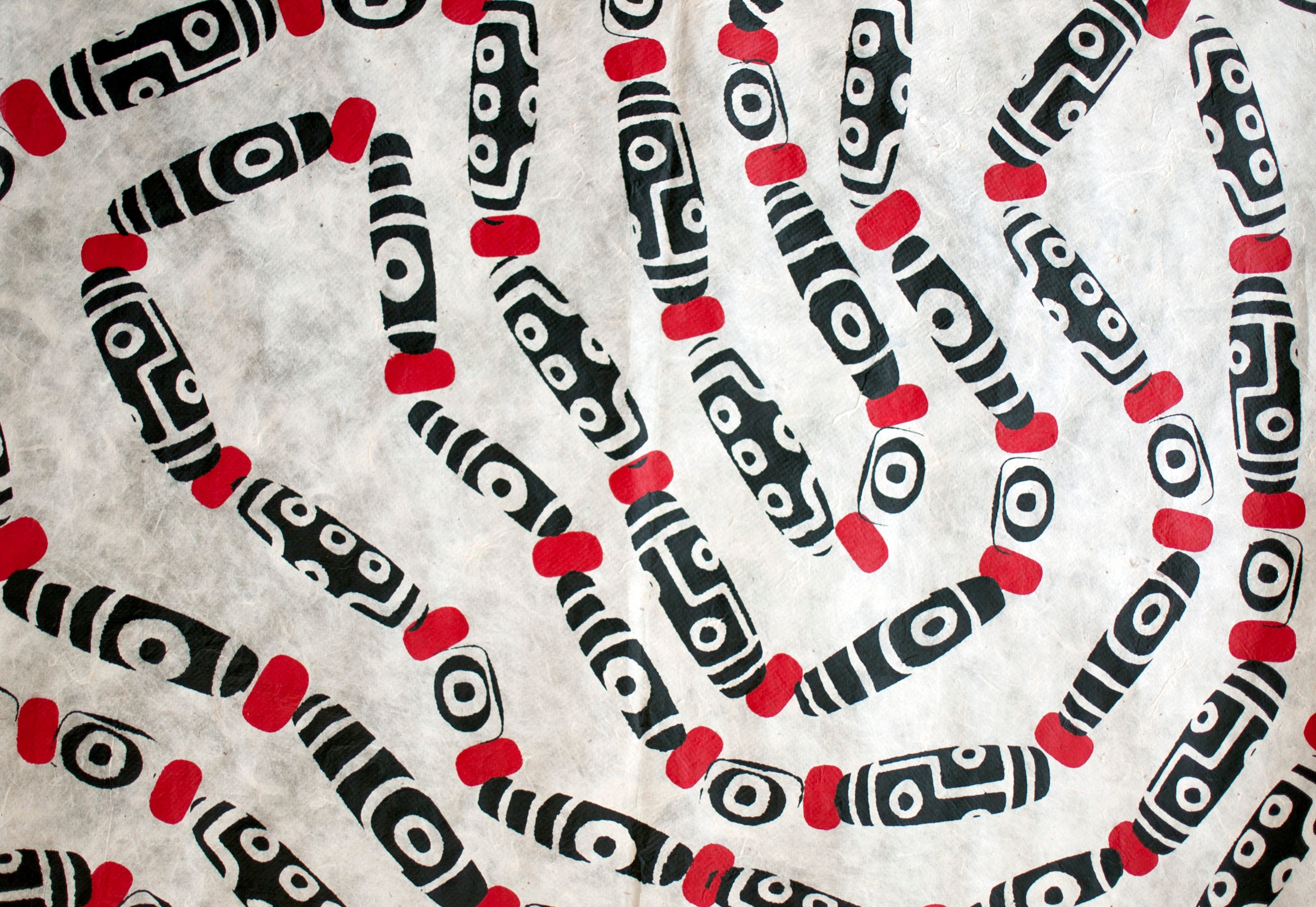Treasures of Norbulingka
In Tibet, religious objects were commissioned by patrons, individual artists, or guilds, as existed in Lhasa. All orders were custom made and patrons could commission anything from a two inch statue to fit in a gao portable altar, to a massive, hand hammered piece that would grace the interior of a new monastery hall. A Thangka could be a 6 inch finely detailed tsakali or an appliqué measuring several stories, unrolled on special occasions. Individuals ordered a religious object as an act to merit, usually following the death of a loved one or an illness in the family. Apprentices began their training young, learning their trade by working alongside the masters, helping with orders and rising in the ranks as per their competence.
In the 80’s, it was difficult to find a qualified thangka painter to fulfill an order. There were still a few great artists in the community, but they tended to be spread thin, with many orders, and patrons who had little to spend. To cover costs, they had to cut corners, using industrial colors, and giving as much of the work as possible to their students. Despite this, one had to often wait years for a thangka of mediocre quality. Norbulingka’s main purpose was to create an environment where masters could devote their time to training and creation, without the worry of affording expensive materials or supporting apprentices or junior artists with stipends and wages. This allowed Norbulingka the capacity to take on important orders and satisfy the wishes of patrons who sought the best.
We began our appliqué section in the late 90’s, inspired by the work of Gyeten Namgyal, the great appliqué master who began his training under the 13th Dalai Lama, later become Namsa Chenmo and master of the Tailor’s guild, finally serving under the 14th Dalai Lama. Gyeten Namgyal had directed the work of the Great Kyigu, the giant thangka that is hung yearly from the Potala Palace and his description of the work had made us dream. We had seen photos of the great Kyigu, and other very large appliques in Mongolia where the skill had been widespread in the 19th and early 20th century. Gyeten Namgyal passed away in India in 1995, the year of Norbulingka’s inauguration. He had told us that appliqué artists always had to rely on thangka painters for designs and proportions, which could be a drawback. Norbulingka offered a unique opportunity of merging the two skills, and our Master Thangka artist at the time, Temba Chophel, who had briefly learned appliqué from Gyeten Namgyal in Lhasa, became a bridge between the two. We arranged to have one of his apprentices, Kusho Jamyang, to be trained in both and he became the Master of the Appliqué section.
An American Buddhist patron ordered a 16ft thangka in 2003, and delighted with the result, expressed regret that though Norbulingka made thangkas for patrons worldwide, we had none to keep for ourselves. He ordered a second thangka, of the subject of our choice, to be kept at Norbulingka as our own treasured heirloom. The subject chosen was the Sixteen Arhats and Temba Chophel and Jamyang worked together on the design and execution, which took ten months. We had to custom order the brocade from Varanasi, in a brocade making workshop that had been begun in the 19th century to respond to orders from Tibet and was owned by the descendants of the Moslem family who had established it over a hundred years earlier. There were dozens of rolls of plain, colored satin and more of brocade woven on Jacquard looms in silk and gold thread. The brocade was cut into hundreds of small, medium and larger pieces couched in silk-wrapped horsehair sent from Mongolia. These were distributed out to fifteen appliqué tailors, who transformed these materials into intricate renderings of deities, flowers, animals, mythical creatures and clouds, embroidering impeccably fine features in silk thread.
The pieces brought together, the Master began placing each figure on the master plan, laid out on the floor of a meeting hall, to be sewn onto the base. The layering of the different fabrics is a particularly delicate job, which, when properly done, gives depth and perspective to the work.
The Thangka was finally completed in the summer of 2006, and sent to New York for a Norbulingka event, hosted by Donna Karan, with His Holiness as the Chief Guest. It gave us all a tremendous sense of pride to be able to show the collective work of so many artists engineered into one, unique piece of striking beauty. Today, it hangs in Deden Tsuklhakhang, Norbulingka’s temple, a witness to the accomplishments of our master and artists and the presence and vigor of Tibetan art.


